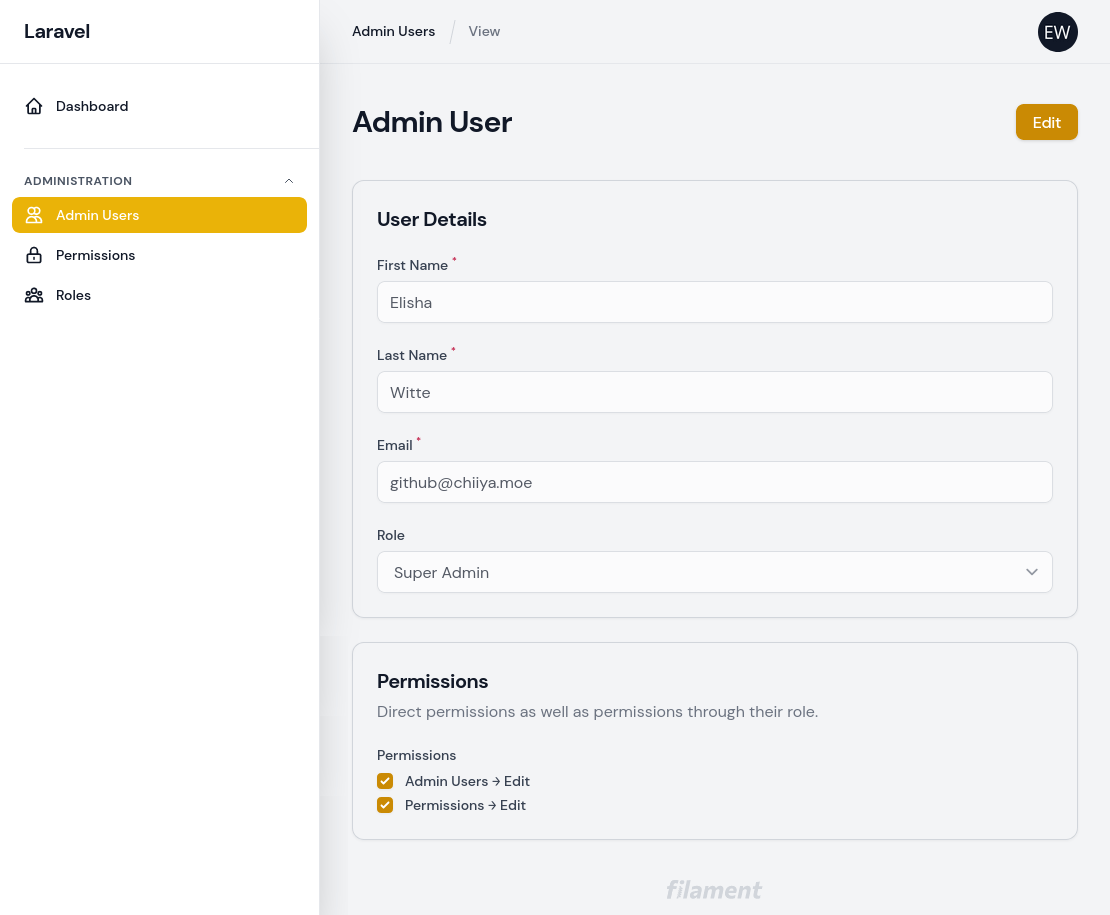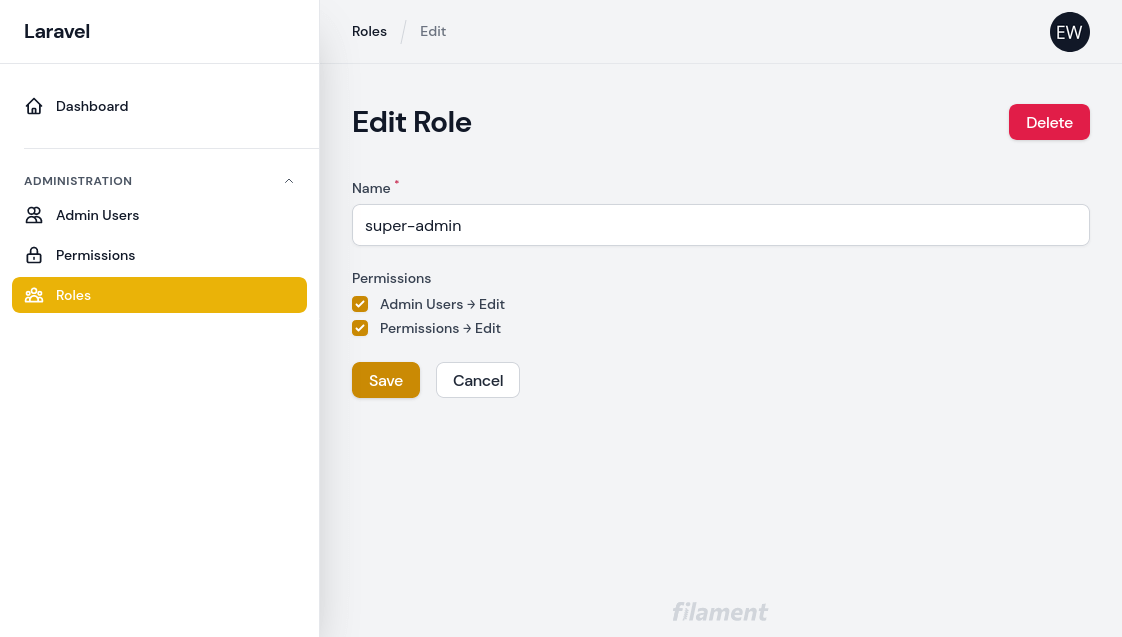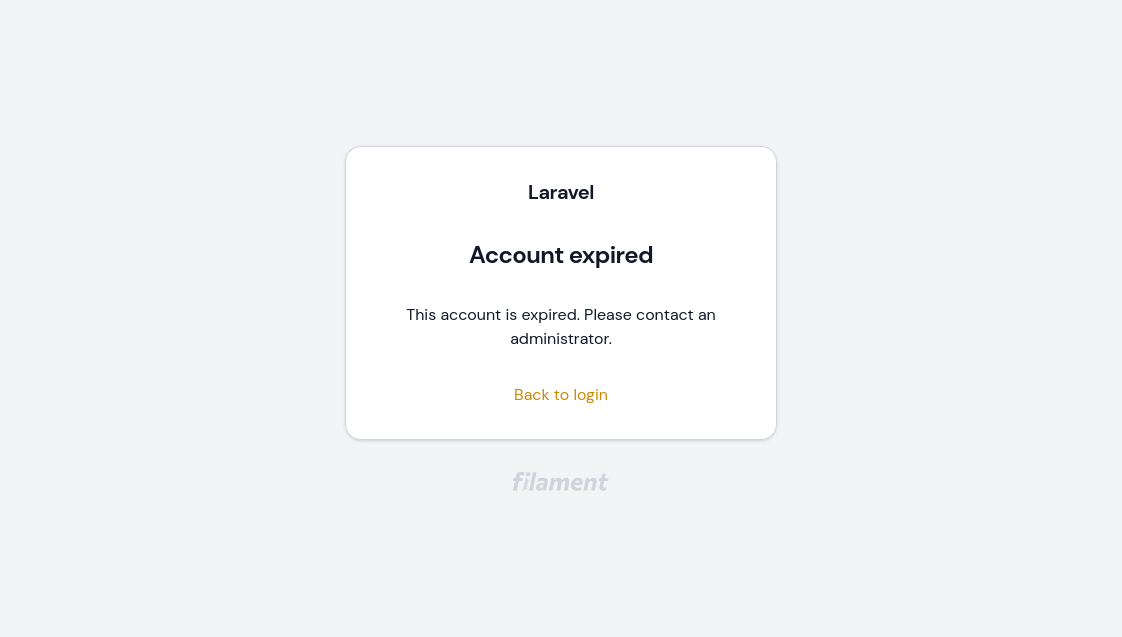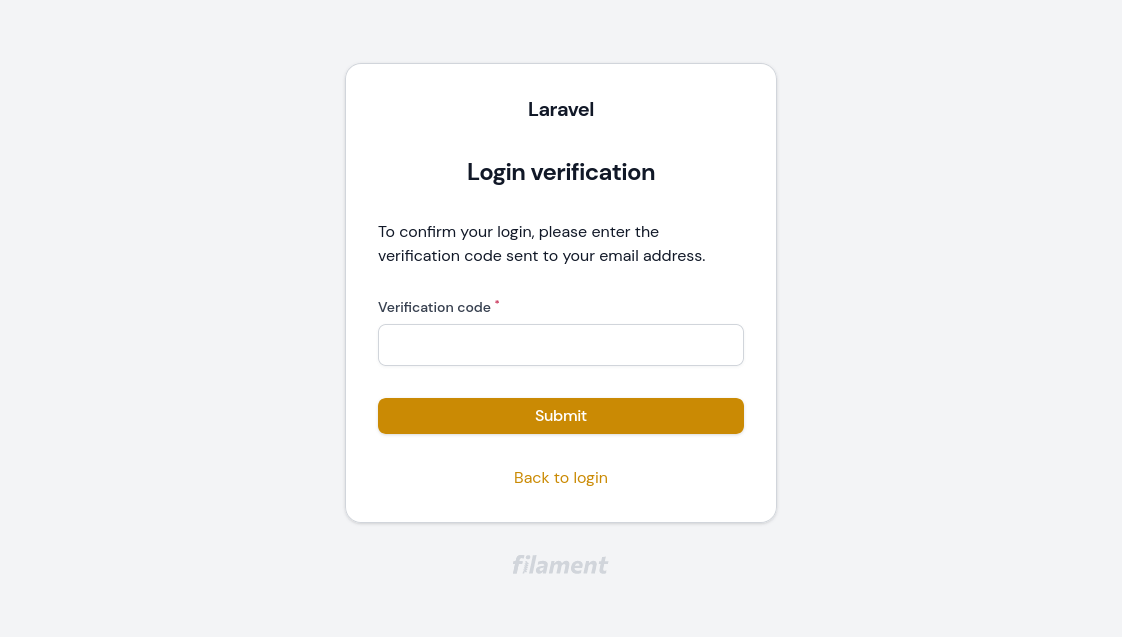chiiya / filament-access-control
Admin user, role and permission management for Laravel Filament
Fund package maintenance!
chiiya
Installs: 42 816
Dependents: 0
Suggesters: 0
Security: 0
Stars: 218
Watchers: 3
Forks: 32
Open Issues: 1
pkg:composer/chiiya/filament-access-control
Requires
- php: ^8.2|^8.3|^8.4
- filament/filament: ^4.0
- illuminate/contracts: ^12.0
- spatie/laravel-package-tools: ^1.11
- spatie/laravel-permission: ^6.4
Requires (Dev)
- chiiya/laravel-code-style: ^3.0
- filament/upgrade: ^4.0
- orchestra/testbench: ^9.0|^10.0
This package is auto-updated.
Last update: 2026-01-05 19:02:02 UTC
README
Filament Access Control
Opinionated setup for managing admin users, roles and permissions within Laravel Filament
Features
- Separate database table for filament admin users (separate model, separate guard, separate password broker)
- Uses spatie/laravel-permission for roles and permissions
- Fully localized
- CRUD resources for admin users, roles and permissions
- Admin users may belong to one role
- Admin users can have direct permissions or indirect permissions through their role
- When creating admin users through the admin interface, no password is specified. Instead, the user receives an email prompting them to set their password
- Optional account expiry for admin users. Expired accounts are no longer able to log in
- Optional email based two-factor authentication.
Installation
- Install the package via composer:
composer require chiiya/filament-access-control
- Update your Filament Panel ServiceProvider and register the plugin:
use Chiiya\FilamentAccessControl\FilamentAccessControlPlugin; return $panel ->default() ->id('admin') ->path('admin') ->plugin(FilamentAccessControlPlugin::make())
You may remove any calls to login() or other methods that configure the authentication process, since the plugin
takes care of that.
- Publish the migrations and config, then run the migrations. Make sure you also publish and run the spatie/laravel-permission migrations if you haven't done so yet.
php artisan vendor:publish --tag="filament-access-control-migrations" php artisan vendor:publish --tag="filament-access-control-config" php artisan vendor:publish --provider="Spatie\Permission\PermissionServiceProvider" php artisan migrate
-
To seed the necessary base data (role & permissions), run
php artisan filament-access-control:installor call theChiiya\FilamentAccessControl\Database\Seeders\FilamentAccessControlSeederseeder in your database seeder. -
Create an admin user using
php artisan filament-access-control:user. If you create users programmatically (e.g. in your database seeder), make sure to assign them thesuper-adminrole if you want them to be able to access the role and user management.
Optionally, you can publish the translations with:
php artisan vendor:publish --tag="filament-access-control-translations"
Optionally, you can publish the views with:
php artisan vendor:publish --tag="filament-access-control-views"
Usage
Authorizing Resources, Pages & Actions
Authorizing Resources
To authorize access to resources, use policies as described in the Filament documentation.
class ProductPolicy { public function viewAny(FilamentUser $user): bool { return $user->can('products.view'); } // ... }
Authorizing Pages
This package comes with a simple trait that you can use to authorize access to custom pages based on a permission.
use Chiiya\FilamentAccessControl\Traits\AuthorizesPageAccess; class MyPage extends Page { use AuthorizesPageAccess; public static string $permission = 'my-page.view'; public function mount(): void { static::authorizePageAccess(); } }
Authorizing Actions
One way to authorize actions is to use the visible() method:
ButtonAction::make('exports') ->visible(fn () => Filament::auth()->user()->can('exports.view'))
Localizing Role & Permission Names
Roles and permissions should have names that make them easy to use in code (e.g. admin-users.update).
For the admin you may however wish to localize them or make them more readable. You can do so by simply
adding a JSON translation entry for the given role or permission name (e.g. lang/en.json):
{
"admin-users.update": "Admin Users → Edit"
}
Feature: Account Expiry
With the optional account expiry feature, all accounts require an expiration date. When accounts are expired, they can no longer log in. To enable the account expiry feature, enable the feature flag in the config file:
'features' => [ \Chiiya\FilamentAccessControl\Enumerators\Feature::ACCOUNT_EXPIRY, ],
You will also need to add the EnsureAccountIsNotExpired middleware to your filament auth middleware config in your
panel service provider:
use Chiiya\FilamentAccessControl\Http\Middleware\EnsureAccountIsNotExpired; ... ->authMiddleware([ Authenticate::class, EnsureAccountIsNotExpired::class, ]);
Feature: Two-Factor Authentication
With the optional two-factor authentication feature, users must enter a verification code sent via email upon login. To enable the two-factor authentication feature, enable the feature flag in the config file:
'features' => [ \Chiiya\FilamentAccessControl\Enumerators\Feature::TWO_FACTOR, ],
Custom User Model
To use your own custom user model for the admin (instead of Chiiya\FilamentAccessControl\Models\FilamentUser),
point the value of user_model in the filament-access-control config file to your own model.
'user_model' => CustomFilamentUser::class,
Please make sure that your model either extends the FilamentUser base case or implements the
Chiiya\FilamentAccessControl\Contracts\AccessControlUser interface.
use Chiiya\FilamentAccessControl\Models\FilamentUser; use Chiiya\FilamentAccessControl\Contracts\AccessControlUser; use Filament\Models\Contracts\FilamentUser as FilamentUserInterface; use Filament\Models\Contracts\HasName; use Illuminate\Foundation\Auth\User as Authenticatable; class CustomFilamentUser extends FilamentUser { // ... } // Or alternatively class CustomFilamentUser extends Authenticatable implements AccessControlUser, FilamentUserInterface, HasName { // ... }
Extending Resources
To extend the resources used for managing admin users, roles and permissions, you can adjust the resources config
value:
/* |-------------------------------------------------------------------------- | Resources |-------------------------------------------------------------------------- | Resources used for managing users, roles and permissions. */ 'resources' => [ 'user' => FilamentUserResource::class, 'role' => RoleResource::class, 'permission' => PermissionResource::class, ]
The easiest way to extend the resources is to create your own resource classes that extend the default ones, and overwrite the following methods:
public static function insertBeforeFormSchema(): array
{
return [];
}
public static function insertAfterFormSchema(): array
{
return [];
}
public static function insertBeforeTableSchema(): array
{
return [];
}
public static function insertAfterTableSchema(): array
{
return [];
}
Screenshots
Changelog
Please see CHANGELOG for more information on what has changed recently.
Contributing
Please see CONTRIBUTING for details.
License
The MIT License (MIT). Please see License File for more information.





